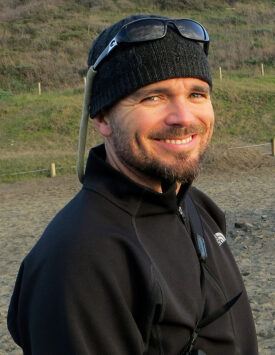Recent Publications
2022
Carter, A.W. and Hopkins, W.A., 2022. Editorial: Sex ratios in the Anthropocene. Front. Ecol. Evol. 10:1048575. doi: 10.3389/fevo.2022.1048575
Hope, S. F., Hopkins, W. A., & Angelier, F. 2022. Parenting in the city: effects of urbanization on incubation behaviour and egg temperature in great tits, Parus major. Animal Behaviour, 194, 1-11.
Hope, S. F., Angelier, F., Ribout, C., Groffen, J., Kennamer, R. A., & Hopkins, W. A. 2022. Warmer incubation temperatures and later lay‐orders lead to shorter telomere lengths in wood duck (Aix sponsa) ducklings. Journal of Experimental Zoology Part A: Ecological and Integrative Physiology.
Groffen, J., O’Brien, R. S., Fralin, E., & Hopkins, W. A. 2022. First record of polyembryony in Hellbenders, Cryptobranchus alleganiensis alleganiensis (Caudata: Cryptobranchidae) alleganiensis. Herpetology Notes, 15, 13-14.
2021
Fallon, J. A., Goodchild, C., DuRant, S. E., Cecere, T., Sponenberg, D. P., & Hopkins, W. A. 2021. Hematological and histological changes from ingestion of Deepwater Horizon crude oil in zebra finches (Taeniopygia guttata). Environmental Pollution, 290, 118026.
O’Brien, R. S.G, Dayer, A. A., & Hopkins, W. A. 2021. Understanding landowner decisions regarding access to private land for conservation research. Conservation Science and Practice, 3(11), e522.
Galligan, T. M., Helm, R. F., Case, B. F.G, Jachowski, C. M. B., Frazier, C. L., Alaasam, V., & Hopkins, W. A. 2021. Pre-breeding androgen and glucocorticoid profiles in the eastern hellbender salamander (Cryptobranchus alleganiensis alleganiensis). General and comparative endocrinology, 313, 113899.
Hope, S. F.G, Hopkins, W. A., & Angelier, F. 2021. Parenting in the city: Does urbanization influence avian incubation behavior?. In INTEGRATIVE AND COMPARATIVE BIOLOGY (Vol. 61, pp. E389-E390)
Madliger, C.L P, Franklin, C.E., Chown, S.L., Fuller, A., Hultine, K.R., Costantini, D., Hopkins, W.A., Peck, M.A., Rummer, J.L., Sack, L., Willis, C.K.R., Cooke, S.J., 2021. The Second Warning to Humanity: Contributions and Solutions from Conservation Physiology. Conservation Physiology, 9(1), coab038.
Hope, S.F. G, DuRant, S.E., Hallagan, J.J., Beck, M. P, Kennamer, R., Hopkins, W.A., 2021. Incubation temperature as a constraint on clutch size evolution. Functional Ecology 35: 909-919.
2020
Fallon, J.A. G, Smith, E.P., Schoch, N., Paruk, J.D., Adams, E.M., Evers, D.C., Jodice, P.G.R. Perkins, M., Meattey, D.E., Hopkins, W.A. 2020. Ultraviolet-assisted oiling assessment improves detection of oiled birds experiencing clinical signs of hemolytic anemia after exposure to the Deepwater Horizon oil spill. Ecotoxicology. 29(9): 1399-1408.
Hopkins, W.A., DuRant, S.E.G, Beck, M.L.P, Ray, W.K., Helm, R.F., Romero, L.M., 2020. Cortisol is the predominant glucocorticoid in the giant paedomorphic hellbender salamander (Cryptobranchus alleganiensis). General and Comparative Endocrinology, 285, 113267. *JOURNAL COVER PHOTO*
Martin, G.U, Perdue, L.U, Gelis, R.A., Vaca, F., Hopkins, W.A., Moore, I.T., 2020. Cane toad (Rhinella marina) predation. Herpetological Review, 51(1), 104-105.
Button, S.T. G, Hallagan, J.J., Jachowski, C.M.B.G, Case, B.F.G, Groffen, J., Hopkins, W.A., 2020. Weathering the storm: Improving the availability and stability of artificial shelters for hellbender salamanders. River Research and Applications 36(9): 1944-1953.
Button, S.T. G, Jachowski, C.M.B.G, Case, B.F.G, Groffen, J., Hopkins, W.A., 2020. The Influence of Multiscale Habitat Variables and Population Density on Artificial Shelter Use by Hellbenders (Cryptobranchus alleganiensis). Herpetologica 76(4): 355-365.
Hope, SF G, DuRant, SE, Angelier, F, Hallagan, JJ, Moore, IT, Parenteau, C, Kennamer, RA, Hopkins, WA. 2020. Prolactin is related to incubation constancy and egg temperature following a disturbance in a precocial bird. General and Comparative Endocrinology, 295, 113489. doi.org/10.1016/j.ygcen.2020.113489
Grimaudo, AT U, Hope, SF G, DuRant, SE, Kennamer, RA, Hallagan, JJ, Hopkins, WA. 2020. Ambient temperature and female body condition are related to night incubation behavior in wood ducks (Aix sponsa). Journal of Avian Biology 51(5) https://doi.org/10.1111/jav.02379
Jachowski, CMB G, Ross, BE, Hopkins, WA. 2020 Evaluating artificial shelter arrays as a minimally invasive monitoring tool for the hellbender Cryptobranchus alleganiensis. Endangered Species Research 41,167-181.
Hope, SF G, Kennamer, RA, Grimaudo, AT U, Hallagan, JJ, Hopkins WA. 2020 Incubation temperature affects duckling body size and food consumption despite no effect on associated feeding behaviors. Integrative Organismal Biology 2(1), obaa003. doi.org/10.1093/iob/obaa003
Hopkins, WA, DuRant, SE, Beck, ML P, Ray, WK, Helm, RF, Romero LM. 2020. Cortisol is the predominant glucocorticoid in the giant paedomorphic hellbender salamander (Cryptobranchus alleganiensis). General and Comparative Endocrinology 285, 113267

